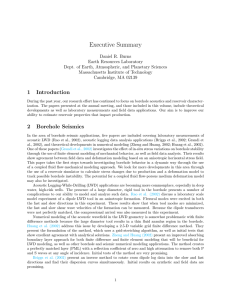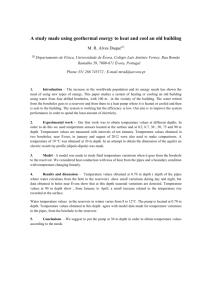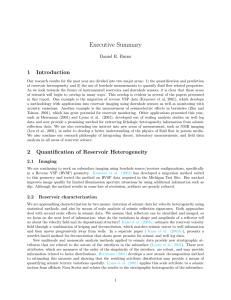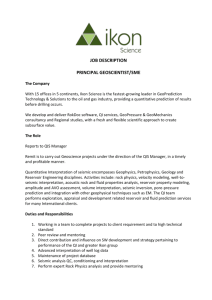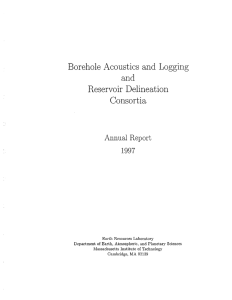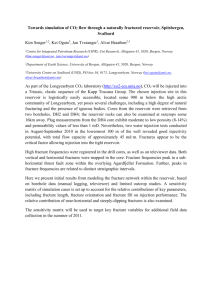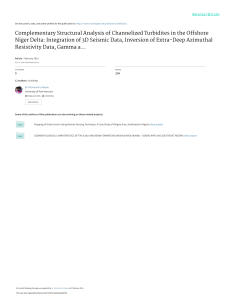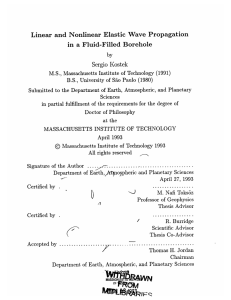EXECUTIVE SUMMARY D. R. Burns Earth Resources Laboratory
advertisement
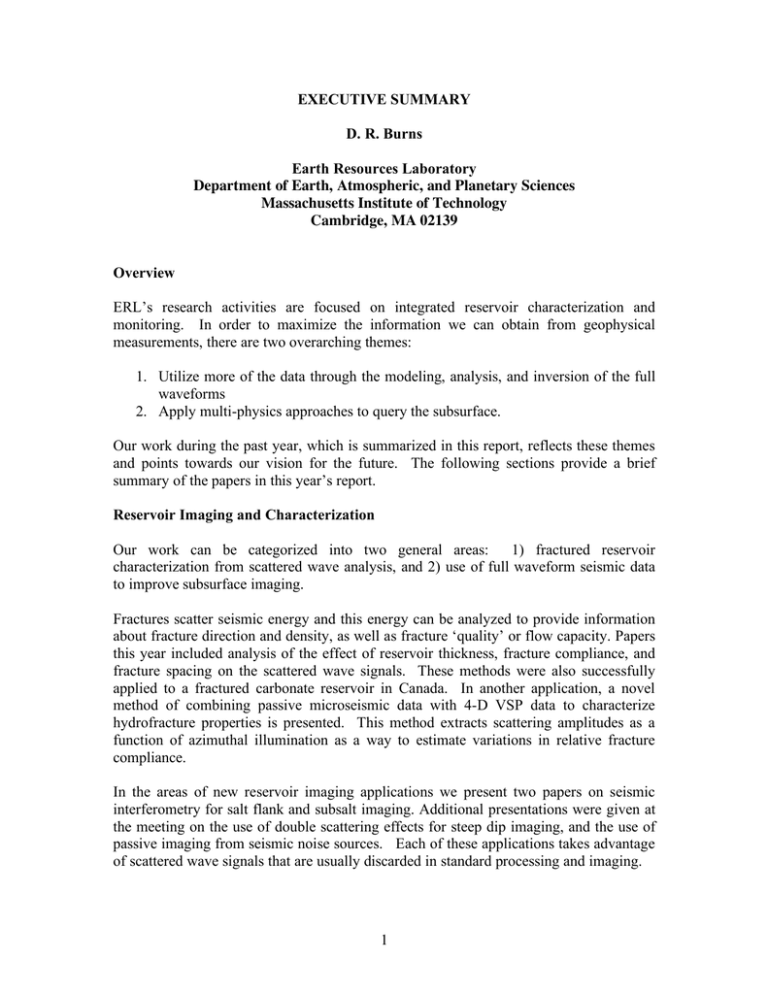
EXECUTIVE SUMMARY D. R. Burns Earth Resources Laboratory Department of Earth, Atmospheric, and Planetary Sciences Massachusetts Institute of Technology Cambridge, MA 02139 Overview ERL’s research activities are focused on integrated reservoir characterization and monitoring. In order to maximize the information we can obtain from geophysical measurements, there are two overarching themes: 1. Utilize more of the data through the modeling, analysis, and inversion of the full waveforms 2. Apply multi-physics approaches to query the subsurface. Our work during the past year, which is summarized in this report, reflects these themes and points towards our vision for the future. The following sections provide a brief summary of the papers in this year’s report. Reservoir Imaging and Characterization Our work can be categorized into two general areas: 1) fractured reservoir characterization from scattered wave analysis, and 2) use of full waveform seismic data to improve subsurface imaging. Fractures scatter seismic energy and this energy can be analyzed to provide information about fracture direction and density, as well as fracture ‘quality’ or flow capacity. Papers this year included analysis of the effect of reservoir thickness, fracture compliance, and fracture spacing on the scattered wave signals. These methods were also successfully applied to a fractured carbonate reservoir in Canada. In another application, a novel method of combining passive microseismic data with 4-D VSP data to characterize hydrofracture properties is presented. This method extracts scattering amplitudes as a function of azimuthal illumination as a way to estimate variations in relative fracture compliance. In the areas of new reservoir imaging applications we present two papers on seismic interferometry for salt flank and subsalt imaging. Additional presentations were given at the meeting on the use of double scattering effects for steep dip imaging, and the use of passive imaging from seismic noise sources. Each of these applications takes advantage of scattered wave signals that are usually discarded in standard processing and imaging. 1 Reservoir Monitoring and Induced Seismicity Reservoir production changes the in-situ stress field causing induced microseismic events that can provide information about stresses and reactivated faults. These data can also be used to imaging the reservoir as a function of time. Production also can result in surface subsidence that can be measured very accurately by GPS and InSAR methods. Geomechanical modeling that combines the passive seismic data and surface deformation data can give great insight into reservoir compaction processes. Several presentations were given during the meeting on these topics. Borehole Logging and Rock Physics Borehole acoustics has long been a major topic of our research. We are now directing our efforts into rock property estimation and multi-physics. Papers this year include work on electrical methods and electroseismic/seismoelectric applications. We have also gone back to some fundamental rock physics modeling in order to understand rock-fluid interactions. Going forward, our borehole acoustics research will be in the following areas: 1) relating borehole measurements to rock-fluid interactions in the borehole and in the formation pore space; 2) developing rock property estimation methods based on better rock physics understanding; 3) understanding the effects of near borehole heterogeneity (azimuthal and radial) on the borehole modes, and developing methods for extracting information about that heterogeneity; and 4) integrating borehole data with VSP, crosswell, and surface data for reservoir characterization (e.g., fracture characterization). Because 2007-2008 marks the 25th anniversary of ERL’s founding as well as it’s efforts in borehole acoustics, we will hold a Special 25th anniversary research conference, at a date to be determined this coming fall, to recognize and celebrate the many scientific achievements over this period and discuss the future technical challenges. 2

